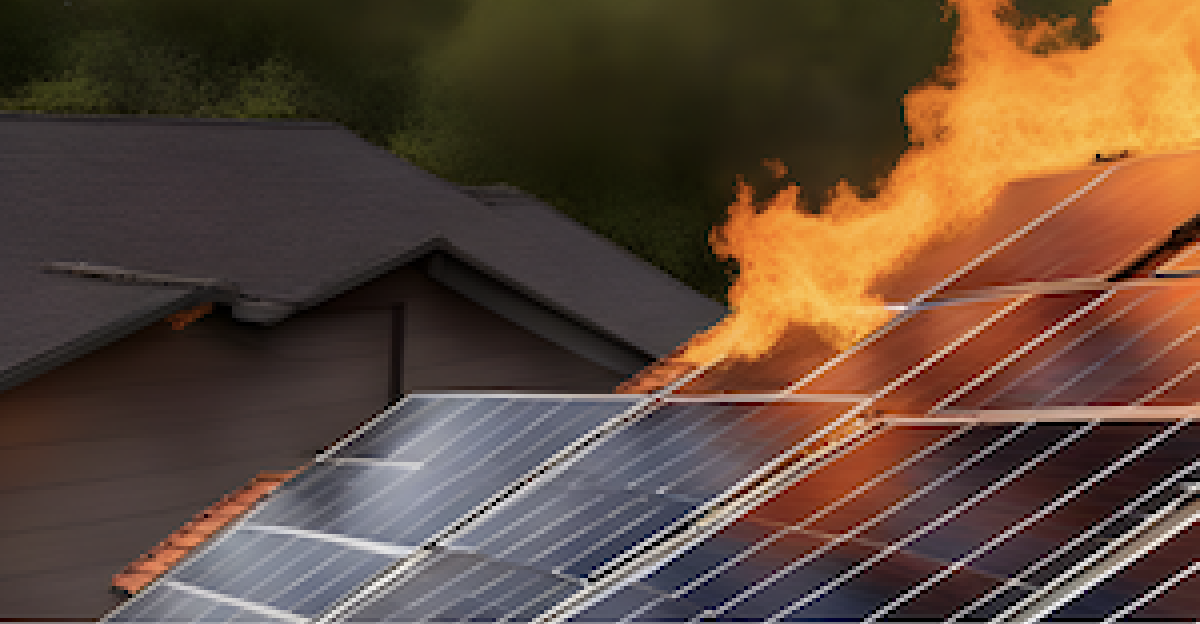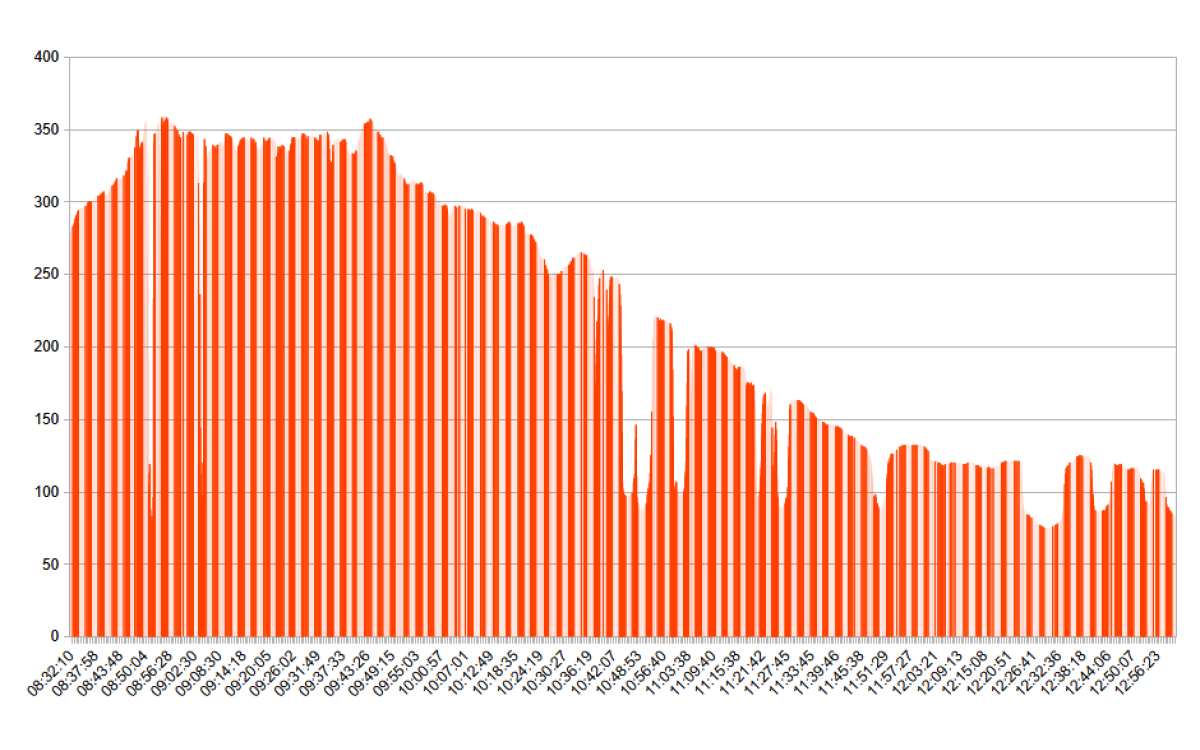Harvesting solar energy is both green for the environment and helps save money from ever increasing energy cost.
However, fire hazards do exist in PV solar systems especially if we do not make the necessary effort to reduce such risks. This article serves to highlight to us the means available to reduce or make our PV system as fireproof as possible, make us aware what are the early tell tale signs of potential fire and how to react in event the worst case scenario occurs.
Let's begin by listing the possible causes of fires. The high profile fires in the news are visibly occurring on solar panels though to a lesser extent fires do break out at the sub-systems down stream example at inverter, solar batteries and somewhat unrelated, to the home appliance itself. With that we shall talk on the fires at solar panels since they are outdoors and mostly out of sight and unfortunately out of mind.

According to Energy Efficiency & Renewable Energy, design flaws, component defects, and faulty installation generally cause solar rooftop fires. These problems can cause arcs between conductors or to the ground, as well as hot spots, which can ignite nearby flammable material. Inadequate insulation, improper electrical wiring, or poor quality components can also contribute to fire hazards. A dated but still relevant 2013 study was released by Laukamp et al., (reference 2013 EU PVSEC:PV fire hazard) listed the causes of fires in order of frequency:
- 37% Product defects - solar panels, inverter etc quality
- 35% Installation faults - loose connectors or fuses, mixing of component makes
- 18% Poor planning/design faults - undersizing of cable capacity etc
- 10% External influence - rats gnawing on cables, walking on panels etc
The details of each category is available in our PDF file for download in link at end of article.
The good news is there are tools, gadgets and logical means we can do to reduce or eliminate the risk of fire hazards to our PV solar systems.
How to prevent or reduce fire risks to our PV system?
Install solar panels by qualified professionals so that they can be in compliance with regulated and safety codes. Proper installation is critical to ensuring that the system is safe and efficient.
Regular maintenance of solar panels is essential to ensure that they are functioning correctly and safely. This includes cleaning the panels, checking the wiring, and inspecting the components for any signs of damage or wear and tear. A recent development is the current sensing PV array test kit known as PVBuddy. Its non contact means of measuring as part of regular maintenance will help check for any degradation of current amperes in each array which may alert to potential fire hazards
Installing a fire suppression system can help to prevent fires from spreading and causing damage. This can include sprinklers, fire extinguishers, or fire alarms etc.
Ensure no water ingress to DC Isolators, Combiner boxes, Inverters etc. Water coupled with the weathering effects of mother nature will corrode and damages internal parts with the enclosures.
Check each array or string each quarter. A recent product, PVBuddy, allows for array level checking without disruption to solar power generation. It uses Current amperes to check instead of voltage to give more sensitive indication to potential degradation in materials or components such as cables, isolator contacts or connections relating to the array under test.
What are the signs of a potential solar panel fire?
There are several signs of a potential solar panel fire, including:
1. Smell of smoke: The smell of smoke is one of the most obvious signs of a potential solar panel fire. If you smell smoke, it is important to investigate the source immediately.
2. Burning smell: A burning smell, particularly a plastic-type burning smell, can also be a sign of a potential solar panel fire. This can be caused by hot spots or arcing in the system.
3. Hot spots: Hot spots on solar panels can be a sign of a potential fire. Hot spots occur when a cell or group of cells in the panel are not functioning correctly, causing them to overheat and potentially ignite nearby material.
4. Arcing: Arcing between conductors or to the ground can also be a sign of a potential solar panel fire. This can be caused by design flaws, component defects, or faulty installation.
If you notice any of these signs, it is important to take immediate action to investigate the source and address any potential fire hazards. This may include shutting off the power to the solar panel system and contacting a qualified professional to inspect and repair the system if necessary.
Action to take in event of solar panel fire
In the event of a solar panel fire, it is important to take immediate action to ensure the safety of everyone involved. Here are some steps to take:
1. Call for help: Call the fire department immediately and let them know that you have a solar panel system installed on your property. This will help them to be better prepared to handle the situation.
2. Turn off the system: If it is safe to do so, turn off the solar panel system to prevent the fire from spreading. This can be done by flipping the switch on the inverter or by turning off the main breaker.
3. Evacuate the area: If the fire is spreading quickly or if there is a risk of explosion, evacuate the area immediately and move to a safe location.
4. Use caution: Solar panels can still be electrified even if the system is turned off, so it is important to use caution when approaching the panels. Do not touch the panels or any wiring, and stay at a safe distance.
5. Let the professionals handle it: Solar panel fires can be dangerous and difficult to extinguish, so it is important to let the professionals handle it. Firefighters are trained to handle these types of fires and will know how to safely extinguish the flames.
Conclusion
By taking the steps outlined above, we can help to prevent solar panel fires and ensure that our solar panel systems are safe and efficient. Proper installation, regular maintenance, and the use of high-quality components are critical to ensuring that the system is safe and efficient. Additionally, the use of solar batteries and fire suppression systems can help to reduce the risk of fire.
In the event of a solar panel fire, it is important to call for help, turn off the system if it is safe to do so, evacuate the area, use caution, and let the firefighters handle it. Taking these steps can help to ensure the safety of everyone involved and minimize the damage caused by the fire.
A full 8-page PDF file is available for download. Please share with as many people who can benefit from this article. We ask for your email to stay in touch. To commence, click here.

